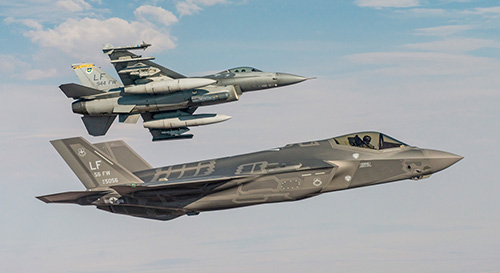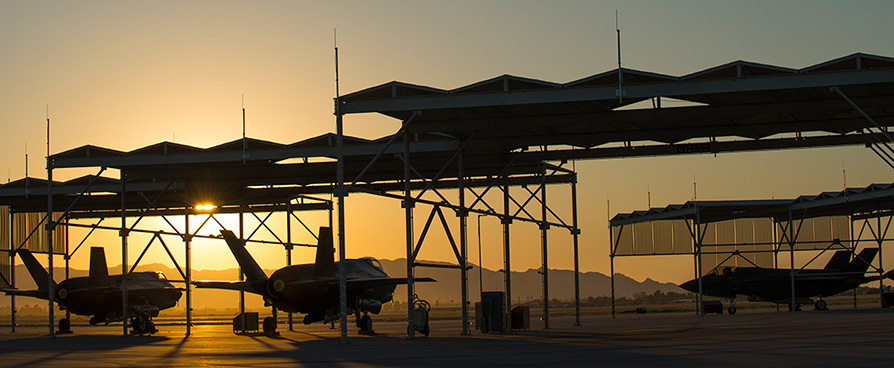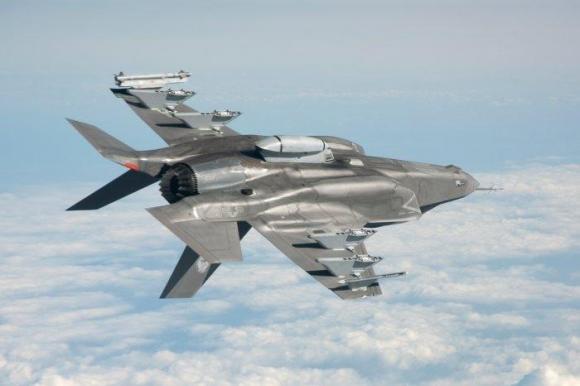The F-35 Lightning II, which entered service with Initial Operational Capacity with the Marine Corps on 1 August, continues to divide and unleash fierce controversy. A new relationship, issued by National Security Network, a Washington think tank, shows how inferior fifth-generation fighters are compared to current Russian and Chinese jets.
"It will also be lower than the American fighters it will replace. The F-35 is slow, poorly armed and visible to enemy sensors. This fighter will burn the considerable margin that American air power still holds today, with exorbitant costs. Finally, without considering the risk in human lives of an inadequate aircraft ".
The document was drafted by some councilors for the national security of various administrations.
According to the Department of Defense, the Joint Strike implements cutting-edge technologies for the battlefield of the future and will become the backbone of American aviation within the next five years. The final cost of the F-35 program will be 1.500 billion dollars.
National Security Network analysts compared the F-35's power, maneuverability and payload with Russian-made MiG-29 Fulcrum and Su-27 Flanker fighters. "F-35 has a much lower wing load, with the exception of the Navy variant and poor transonic acceleration. The F-35 is a Thunder without Lightning ”.
 Perhaps this last phrase, "Thunder without Lightning", is the most despicable to date coined by the Americans to describe the F-35.
Perhaps this last phrase, "Thunder without Lightning", is the most despicable to date coined by the Americans to describe the F-35.
"Against a high-end fighter, like the Russian Mig or Sukhoi, the F-35 has little hope. Being lower for thrust, acceleration and wing loading, the fighter will not have the speed and the power to maneuver and get those advantages that should allow him to obtain an optimal shooting position ".
The first VMFA-121 squadron will be transferred to the Iwakuni base in Japan in January of the 2017 to respond to possible crises in the Region. According to the Marine Corps Aviation Plan, the F-35 will replace the entire EA-6B Prowler fleet within the 2019 and will displace the AV-8B Harrier from the 2026. Finally, the F-35 will detect the beloved F / A-18 Hornets in the 2030. The Air Force will reach the Initial Operational Capacity of the F-35A as soon as the first squad consisting of 12-24 aircraft will be formed, with trained aviators and crews able to perform close air support missions, interdiction and limited suppression and destruction of enemy anti-aircraft defenses. The F-35A will reach the Initial Operational Capacity between August and December of the 2016. Finally, the US Navy, equipped with the F-35Cs, will reach its initial operational capacity as soon as the first squadron of 10 aircraft will be formed, with personnel and pilots of the navy trained and able to carry out the assigned missions. The F-35C will reach the initial operational capacity between August 2018 and February 2019. The 55 years of life of the F-35 fighter will cost the United States 1500 billions of dollars. In addition to the United States, hunting was ordered by Great Britain, Australia, Italy, Turkey, Norway, the Netherlands, Japan, South Korea and Israel.
F-35: what have I been designed for?
The F-35, a multi-role fighter-bomber, was not designed for air superiority, but to excel in contexts that emphasize the Beyond Visual Range (BVR), in information-intensive environments connected to the network. If they work as promised, the aircraft's capabilities will be truly remarkable.

History teaches. The success of combat aircraft sometimes transcends their real project. In fact, designers and politicians are rarely able to speculate on the operational demands of the war that will or will be needed in the 2040 a fighter hunt. That is why, in times of peace, to imagine a platform of the future is a very difficult task.
The F-35 was not designed on the failures of previous fighters (as happened for the post-war Vietnam production), but to operate in a context that does not yet exist. The F-35 was designed for the war of the future, but it will probably be used in roles that its designers don't even imagine.
Today it is a plane built in peacetime, but designed for tomorrow's fights. The ideal operational theater of the F-35, in fact, does not yet exist and probably will still be a few decades before it takes shape, but the hunt could be decisive and represent that coveted "Game Changer".
The defeat in air combat that took place last January, between an F-16D Block 40 and an F-35A, was in some ways easily imaginable for a simple design concept: the F-35 is designed to hit enemies beyond the range. visual, within a system made up of various platforms. And protected by pure fighters: F-22 for the Americans, Typhoon for the Europeans.
Perhaps the problem was conceptual: having demanded a platform able to supplant a number of fighters with specific roles.
Click here to read Lockheed Martin's reply
(photo: Lockheed Martin)












